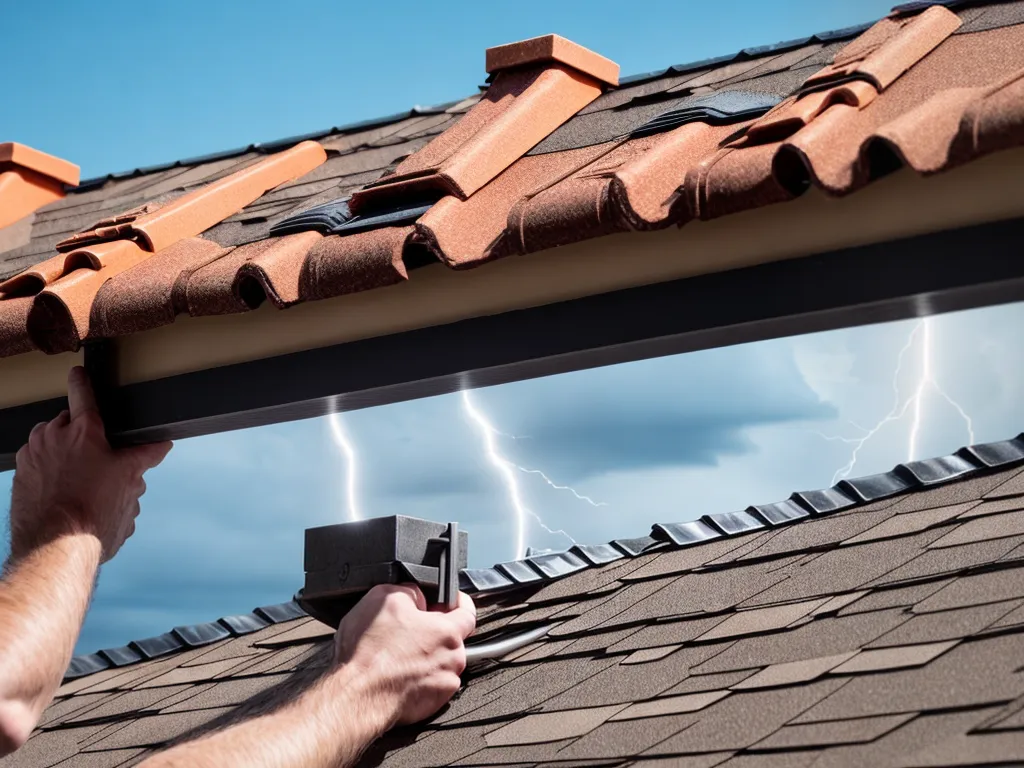
Installing a lightning rod on your roof can help protect your home from lightning strikes. With some simple materials and basic tools, you can make your own lightning rod attachment to secure to your roof in just 5 easy steps.
What You'll Need
-
Copper rod or thick copper wire, at least 1/2 inch thick and 8 feet long - This will serve as the conductive rod to attract lightning strikes and conduct the electricity safely into the ground. Copper is highly conductive and commonly used for lightning rods.
-
Copper clamps or ring terminals - To attach the copper rod securely to the roof. Copper is best to avoid corrosion.
-
Grounding wire - Stranded copper wire to connect the rod to the grounding system. Should match thickness of rod.
-
Ground rod and clamp - Rod that goes into the ground near your home's foundation to disperse electricity.
-
Mastic pads - Adhesive pads that stick the rod to the roof without damaging shingles.
-
Roof sealant - To seal any holes drilled through roof.
-
Basic tools - Drill, hacksaw, tape measure, screwdriver, wrench, wire cutters, etc.
Step 1: Cut the Rod to Length
The copper rod should extend 1-2 feet above the highest point of your roof. This helps ensure strikes connect with the rod and not your roof.
Measure the height from the peak of your roof to the ground. Add 1-2 feet to this measurement to get the total rod length you need.
Cut the rod to your measured length using a hacksaw. File any rough edges smooth.
The rod needs to be securely attached, so an extra foot above the roof is better.
Step 2: Clamp the Rod to the Roof
Attach the rod securely to the roof with copper clamps or ring terminals.
Clean the roof attachment area so mastic pads will stick properly. Remove any loose shingles or debris.
Place mastic pads where the rod will attach. This protects the roof.
Attach clamps around the rod, bolting them into the roof rafters if possible for maximum hold.
Seal any drilled holes with roofing sealant.
The rod needs excellent contact with the roof and secure attachment to properly conduct electricity.
Step 3: Run the Ground Wire
Connect the rod to a grounding wire that leads to a ground rod outside your home.
Cut a length of thick grounding wire to run from the rod into your attic and through the walls to outside your home.
Attach one end to the roof rod using a copper clamp.
Secure the wire as it runs into the attic and through the walls for safety and aesthetics.
Attach the other end to a driven ground rod near your home's foundation using a ground clamp.
This safely carries lightning current from the rod into the ground to protect your home's electrical system.
Step 4: Test for Continuity
Verify full contact and continuity from the rod to ground before completing the installation.
Use a multimeter or continuity tester to check for continuous contact all the way from the rod to the ground wire end outside your home.
If there is no continuity, check all connections and attachment points for looseness or corrosion. Tighten or redo any faulty connections and retest until you verify full continuity.
This ensures proper conduction of electricity so your lightning rod system can work effectively.
Step 5: Final Safety Checks
Perform final installation safety checks before considering the project complete.
- Ensure all roof and wall holes are fully sealed against water leakage.
- Check that all connections are tight and secure.
- Make sure the ground rod is sufficiently buried in the earth outside your home.
- Verify the rod extends high enough over the roof and all connections are electrically sound.
- Consider attaching a lightning rod "point" to the top of the rod to help attract strikes.
Conduct visual and continuity tests over the first year to confirm your DIY lightning rod remains intact after weathering and seasons change.
With proper materials, safe installation, and electrical testing, a DIY lightning rod can help protect your roof from damaging lightning strikes. Proper grounding also protects your home's electrical system by safely conducting strikes into the earth. Follow these 5 key steps to set up your own functional lightning rod on your roof.